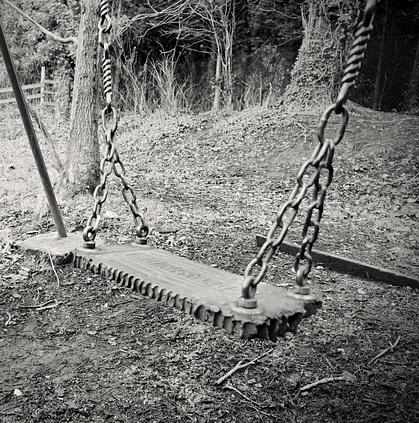
by Richard Subber | Nov 1, 2021 | Democracy, Politics, Tidbits
“…a dope pusher’s argument.”
“Is news what the public is interested in
or what’s in the public interest?…
This business of giving people what they want
is a dope pusher’s argument.
News is something people don’t know they’re interested in
until they hear about it.
The job of a journalist is to take what’s important
and make it interesting.”
from -30- The Collapse of the Great American Newspaper
Charles M. Madigan, ed.
Chicago: Ivan R. Dee, Publisher, 2007
p. 121
Too much of the media is focused on making money by entertaining everyone—
it’s not about journalism any more.
Mostly, if you want news, you have to search for it.
* * * * * *
Copyright © Richard Carl Subber 2021 All rights reserved.
A quote from General Custer
Hint: something to do with Indians…
–
Above all: Poems of dawn and more with 73 free verse poems,
and the rest of my poetry books are for sale on Amazon (paperback and Kindle)
and free in Kindle Unlimited, search Amazon for “Richard Carl Subber”
* * * * * *

by Richard Subber | Oct 23, 2021 | Human Nature, My poetry, Poetry
…the big yellow bus…
The new sneakers looked big for her—it’s too easy to forget that she was still growing every day.
Maybe she won’t remember that first day. Mom and Dad will do the remembering.
The bus full of little kids was a big new noisy world.
She left most of her fears behind, in Mom’s heart.
She didn’t wave, but she must have looked back, at least once…
Moment
It wasn’t obviously a step-by-step process.
It seemed like it took years. It really was years.
A continuum of nights and days
and firsts and talking
and repeated joys
and the desperate acceptance of sickness
and the universe of smiles
and the glad warmth of wanton hugs
and bodies that can touch everywhere, and do…
She grew, yet she’s still so far from grown up,
still so completely the child you love,
but not a yearling,
not a yearling.
Last night she murmured “I’m a little shy”
and you smiled a little, reassured her,
and crumbled a little, in your heart,
it’s one more fear you cannot fix…
Now she stands at your side,
calmly shouldering the backpack,
the totem of kindergarten.
You whisper, once, again, again,
and she listens, she holds your hand.
Now she leans toward the big yellow bus,
the doors open wide—those steps are so high!—
and you kiss the back of her ear
as she leaves you standing alone,
and takes the next step in her life.
September 19, 2016
My poem “Moment” was published in my first collection of 59 new free verse and haiku poems, Writing Rainbows: Poems for Grown-Ups. You can buy it on Amazon (paperback and Kindle), or get it free in Kindle Unlimited, search Amazon for “Richard Carl Subber”
* * * * * *
My poetry. Copyright © Richard Carl Subber 2021 All rights reserved.
Book review: “The Gentle Boy”
The Puritans had a dark side…
by Nathaniel Hawthorne
–
In other words: Poems for your eyes and ears with 64 free verse and haiku poems,
and the rest of my poetry books are for sale on Amazon (paperback and Kindle)
and free in Kindle Unlimited, search Amazon for “Richard Carl Subber”
* * * * * *

by Richard Subber | Oct 13, 2021 | Joys of reading, Language, My poetry, Poetry, Reflections
“…the hush of autumn is danse minuet…”
Walk this way
The familiar path invites me, always in a new way.
I forget so much each time I turn for home.
Today this wood is a full mystery again,
full canopy shelters full magic for the wanderer,
warms an alchemy in me, my steps and pace precess,
becoming dance, my breath becoming breeze,
my sight becoming rays brightening all
that stretches for sun in the umbra moving with me, pausing with me.
The routine of life is a guise for the wonder of growth
and the resurging energy to sprout anew in mouldy places.
The small deaths are symbiotic in so many ways,
the round of living and dying is danse macabre for insect, bird and beast.
The gush of spring is a greening tarantella,
all speed, all blossom, all scented marvel—
the hush of autumn is danse minuet,
all languor, all afterlife of color, all bending toward earth.
I know my place, my purpose, my delight.
I am another life in this calm living forest.
I do not take root, I am not a caretaker, I do not give or take life,
I do not die and rise again in the turn of seasons.
I am a walker, a watcher, a singer of forest songs.
August 11, 2015
That day the buzz in the forest invited me to sing along.
It didn’t seem surprising that I knew so many of the words.
In my mind, at least, I was dancing to the cascade of tunes, turning from left to right
and back again to shoot those brightening rays…
thus, I learned this poem of nature.
My poem “Walk this way” was published January 23, 2018, in my second collection of 47 poems, Seeing far: Selected poems. You can buy it on Amazon (paperback and Kindle), or get it free in Kindle Unlimited, search for “Richard Carl Subber”
“Walk this way” was published in the Spring/Summer 2017 issue of the Aurorean.
“Walk this way” was published (October 2017) in The Four Elements: Effects and Influences, an anthology by PoCo Publications (Poets Collective), available in paperback on Amazon, click here
* * * * * *
My poetry. Copyright © Richard Carl Subber 2021 All rights reserved.
Book review: Lord of the Flies
Never more relevant…
by William Golding
My first name was rain: A dreamery of poems with 53 free verse and haiku poems,
and the rest of my poetry books are for sale on Amazon (paperback and Kindle)
and free in Kindle Unlimited, search Amazon for “Richard Carl Subber”
* * * * * *

by Richard Subber | Oct 4, 2021 | Human Nature, Reflections, Tidbits
it takes smarts to deal with change…
“It is a law of nature we overlook, that intellectual versatility
is the compensation for change, danger and trouble.
An animal perfectly in harmony with its environment
is a perfect mechanism.
Nature never appeals to intelligence
until habit and instinct are useless.
There is no intelligence where there is no change
and no need of change.
Only those animals partake of intelligence
that have to meet a huge variety of needs and dangers.”
Spoken by the Time Traveler in The Time Machine
by Herbert George (H. G.) Wells (1866-1946
New York: Penguin Books, 1895 (repr. 2005)
pp. 78-79
I notice that there is no mention of love and joy and imagination.
I notice that contented animals don’t write poems.
* * * * * *
Copyright © Richard Carl Subber 2021 All rights reserved.
–
My first name was rain: A dreamery of poems with 53 free verse and haiku poems,
and the rest of my poetry books are for sale on Amazon (paperback and Kindle)
and free in Kindle Unlimited, search Amazon for “Richard Carl Subber”
* * * * * *

by Richard Subber | Oct 3, 2021 | Human Nature, My poetry, Poetry
A haiku poem for your inner child…
It doesn’t hurt to admit the truth about thinking—thinking doesn’t always have to be hard work.
The teeter-totter and the carousel and the monkey bars build strong bodies, sure, and they offer a workout for the old brain…try using them, and throw in the sandbox and the swing, too, the next time you’re thinking about what the heck is going on in the real world…
Let some of the innocence of a child into your thoughts.
Inner child
Callow thoughts scamper
in the playground of my mind,
there, whence wisdom comes.
December 2, 2015
My haiku poem “Inner child” was published in my third collection of 64 poems, In other words: Poems for your eyes and ears. You can buy it on Amazon (paperback and Kindle), or get it free in Kindle Unlimited, search for “Richard Carl Subber”
* * * * * *
My poetry. Copyright © Richard Carl Subber 2021 All rights reserved.
–
Old Friends (book review)
Tracy Kidder tells truth about old age…
–
My first name was rain: A dreamery of poems with 53 free verse and haiku poems,
and the rest of my poetry books are for sale on Amazon (paperback and Kindle)
and free in Kindle Unlimited, search Amazon for “Richard Carl Subber”
* * * * * *




